
Soccer Kid is a 1993 side-scrolling platform game developed and published by Krisalis Software in Europe for the Amiga. The player assumes the role of the titular main protagonist who travels across several countries around the world to repair the World Cup by retrieving pieces that were scattered by the alien pirate Scab, the main antagonist who failed to steal and add it to his trophy collection in a robbery attempt. Its gameplay mainly consists of platforming and exploration elements, with a main single-button or two-button configuration, depending on the controls setup.
Artworx was a Naples, Florida software company that produced and supported a line of computer games from 1981 to 2015. It is named after the founder's given name. At first the company published a variety of games, including titles in adventure and arcade-action genres, but were later best known for a strip poker series.

A-10 Tank Killer is a 1989 combat flight simulation video game for DOS developed and published by Dynamix. An Amiga version was released in 1990. The game features an A-10 Thunderbolt II attack aircraft. Following the success of Red Baron, version 1.5 was released in 1991 which included Gulf War missions and improved graphics and sounds. Several mission packs were sold separately. A sequel published by Sierra, Silent Thunder: A-10 Tank Killer II, was released in 1996.
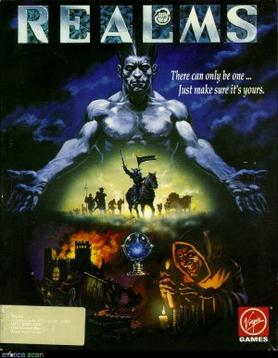
Realms is a 1991 real-time strategy game produced by Graftgold Ltd. for MS-DOS, Amiga, and Atari ST. It was published by Virgin Games. In Realms, the player has to build cities, collect taxes, create troops and fight enemy cities and troops in order to defeat their opponents.

Castles II: Siege and Conquest is a 1992 real-time strategy game for the MS-DOS, developed by Quicksilver Software and published by Interplay Productions. Castles II is the sequel to the 1991 game Castles. Ports for the Amiga CD32, FM Towns, NEC PC-9801 were released in 1993. DOS CD-ROM version and Macintosh port were released in 1994. The Macintosh version of the game was published by Interplay's MacPlay brand name. GOG.com released an emulated version for Microsoft Windows in 2008.

Hard Nova is a role-playing video game developed by Malibu Interactive and published by Electronic Arts in 1990 for DOS, Amiga and Atari ST. It is a follow-up to Sentinel Worlds I: Future Magic.

Centurion: Defender of Rome is a turn-based strategy video game with real-time battle sequences, designed by Kellyn Beck and Bits of Magic and published by Electronic Arts. Originally released for MS-DOS in 1990, the game was later ported to the Amiga and the Sega Genesis in 1991. Centurion shares much of the concept and feel with Beck's earlier game Defender of the Crown (1987).

Fantasy Empires is a role-playing fantasy wargame for MS-DOS made by Silicon Knights and published by Strategic Simulations in 1993. The game uses the Dungeons & Dragons license, and is set in the fictional world of Mystara.
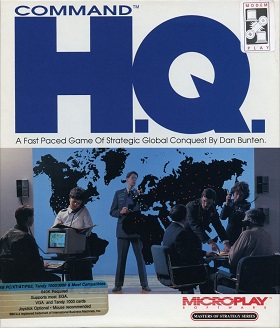
Command HQ is a real-time strategy world domination game. It was released in 1990 by Microplay Software and was created by designer Danielle Bunten.

The Big Red Adventure is an adventure video game developed by Dynabyte and published by Core Design for MS-DOS in 1995. It was released for the Amiga computers in 1997 by Power Computing on CD-ROM.

Overlord is a combat flight simulator by Rowan Software. It was released in 1994 for Amiga and PC MS-DOS platforms.
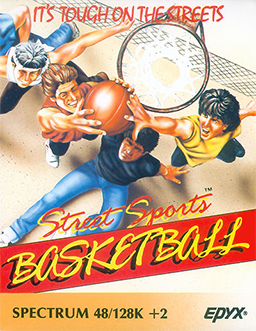
Street Sports Basketball is a sports video game for IBM PC compatibles, Amstrad CPC, Amiga, Apple II, Commodore 64, and ZX Spectrum. It was developed by Epyx and published by U.S. Gold.

Dangerous Streets is a fighting game developed by Italian game studio Micromania and released by Flair Software for the Amiga, Amiga CD32, and MS-DOS in 1993. It was poorly received by critics. Dangerous Streets was bundled with the CD32 in The Dangerous Streets Pack.
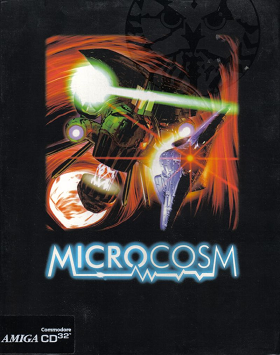
Microcosm is a 3D rail shooter video game developed and published by Psygnosis in 1993. It was originally developed for the FM Towns, and ported for the Sega CD, Amiga CD32, 3DO, and MS-DOS. Microcosm featured realistic FMV animation, with the graphics being rendered on Silicon Graphics workstations. The game is either in first-person or third-person view depending on the gaming system.

Extractors is a video game developed by Millennium Interactive and published by Psygnosis in 1995 for MS-DOS. It is the sequel to Diggers (1993).

Rings of Medusa is a fantasy-themed video game developed and published by Starbyte Software for the Amiga, Atari ST, Commodore 64, and MS-DOS in 1989. The game is a hybrid of role-playing, strategy, and trading genres. It received mixed reviews.
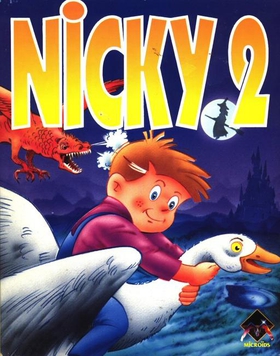
Nicky 2, or Nicky II, is a platform game developed and originally released for the Amiga, Atari ST, and MS-DOS by Microïds in 1992. It is a sequel to 1992's Nicky Boom in which the boy Nicky returns to fight evil forces. Its iPhone version was released as Nicky Boom 2 in 2009.

Whale's Voyage, known in North America as Distant Frontiers, is a 1993 role-playing game developed by an Austrian company Neo Software and published by Flair Software. The game was programmed by Hannes Seifert and Niki Laber.

Brutal Sports Football is a 1993 sports video game developed by Teque London and originally published by Millennium Interactive for the Amiga. It was re-published for MS-DOS and Amiga CD32, and later became the first third-party title published for the Atari Jaguar. The first entry in the Brutal Sports series, the game is a fictional style of football played against human or computer-controlled opponents. It features a different take on american football by emphasising the violent aspect of the sport.

Cover Girl Strip Poker, alternately titled Cover Girl Poker, is a 1991 erotic video game based upon five-card strip poker and originally developed and self-published by Emotional Pictures; it was released for the Amiga, DOS, Commodore 64, CDTV, and CD32. Cover Girl Strip Poker is the original Danish title; it was retitled Cover Girl Poker outside of Denmark in the rest of Europe, and the title was subsequently reverted to Cover Girl Strip Poker for the European CDTV and CD-ROM DOS releases. Emotional Pictures was a subsidiary of Danish company InterActive Vision A/S.



















